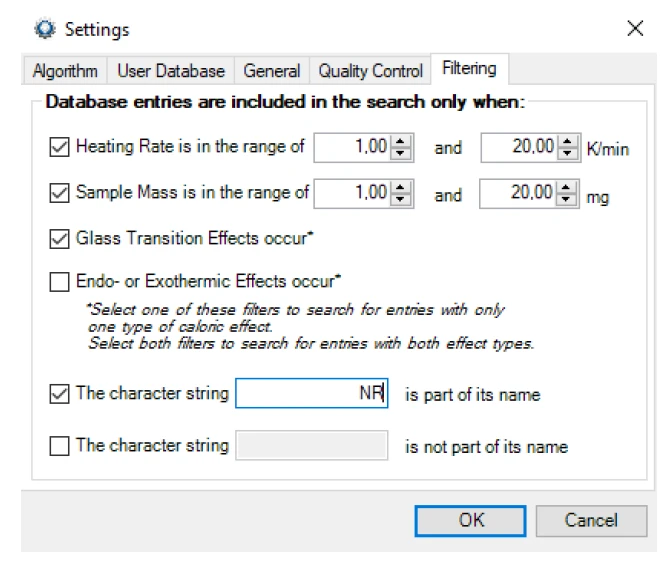Introduction
In day-to-day laboratory work, there are typical questions that often arise. For a new sample regarding analysis, what are the suitable measurement conditions such as temperature program, sample mass or the right crucible? And what measurement results can be expected? Perhaps such a sample was already measured by you in the past – or maybe by NETZSCH.
Wouldn’t it help a lot to simply search in a database for thermal analysis? Identify, which is a part of the Proteus® analysis software, is the solution!
The primary function of the Identify database system is the automatic recognition and comparison of measurement curves. This serves, for example, for quality control and failure analysis. Pure data mining (storing, searching and finding of data) is, of course, the second main application.
How to Carry Out Data Mining with Identify?
One approach in using Identify is to search for similar database measurements or literature data on the basis of an input measurement curve. This is illustrated in figure 1, where a Thermomechanical Analysis (TMA) measurement is compared with various database curves for the same material. The similar TMA curve was found automatically by Identify, while the DSC and TGA curves in this case were found simply by alphabetical sorting of all database measurements shown. It is interesting to see that the Glass Transition TemperatureThe glass transition is one of the most important properties of amorphous and semi-crystalline materials, e.g., inorganic glasses, amorphous metals, polymers, pharmaceuticals and food ingredients, etc., and describes the temperature region where the mechanical properties of the materials change from hard and brittle to more soft, deformable or rubbery.glass transition occurs between -70° and -60°C (see also the Differential Scanning Calorimetry curve) and that the Decomposition reactionA decomposition reaction is a thermally induced reaction of a chemical compound forming solid and/or gaseous products. decomposition – which should normally be avoided in DSC or TMA measurements – starts slowly at above 150°C; this can be seen in the Thermogravimetry (TGA) curve.

The second approach in data mining – in which no similar input measurement is required – is related to the “Manage Libraries/Classes” function (see figure 2). In this case, “NR” was typed manually into the search field for measurements and literature data, and consequently, the three different NR measurements were found. Right-clicking restores the database measurement to also reveal details of the measurement conditions such as temperature program, sample mass, purge gases and sample crucible.

Last but not least, Identify also offers the ability to filter according to the heating rate and the sample mass, as well as according to whether glass transitions or EndothermicA sample transition or a reaction is endothermic if heat is needed for the conversion.endothermic and ExothermicA sample transition or a reaction is exothermic if heat is generated.exothermic effects were evaluated. It is also possible to filter according to the occurence, or lack of occurence, of a string of letters in a measurement name (see figure 3).
The Database Content of Identify
Shown in figure 4 are the NETZSCH libraries, currently containing 1294 entries, which cover various application fields (ceramics, inorganics, metals, alloys, organics, pharma, food, cosmetics and polymers). Available as an option is the KIMW database developed by the Kunststoffinstitut Lüdenscheid, Germany, with DSC curves for 1000 different commercially available polymer grades; here information about the polymer supplier, color and filler material/content is also available.


Summary
Any measurement stored in Identify can be easily found and its associated measurement conditions and evaluations retrieved. This treasure chest of information can be helpful in advance of, or following, any measurement.